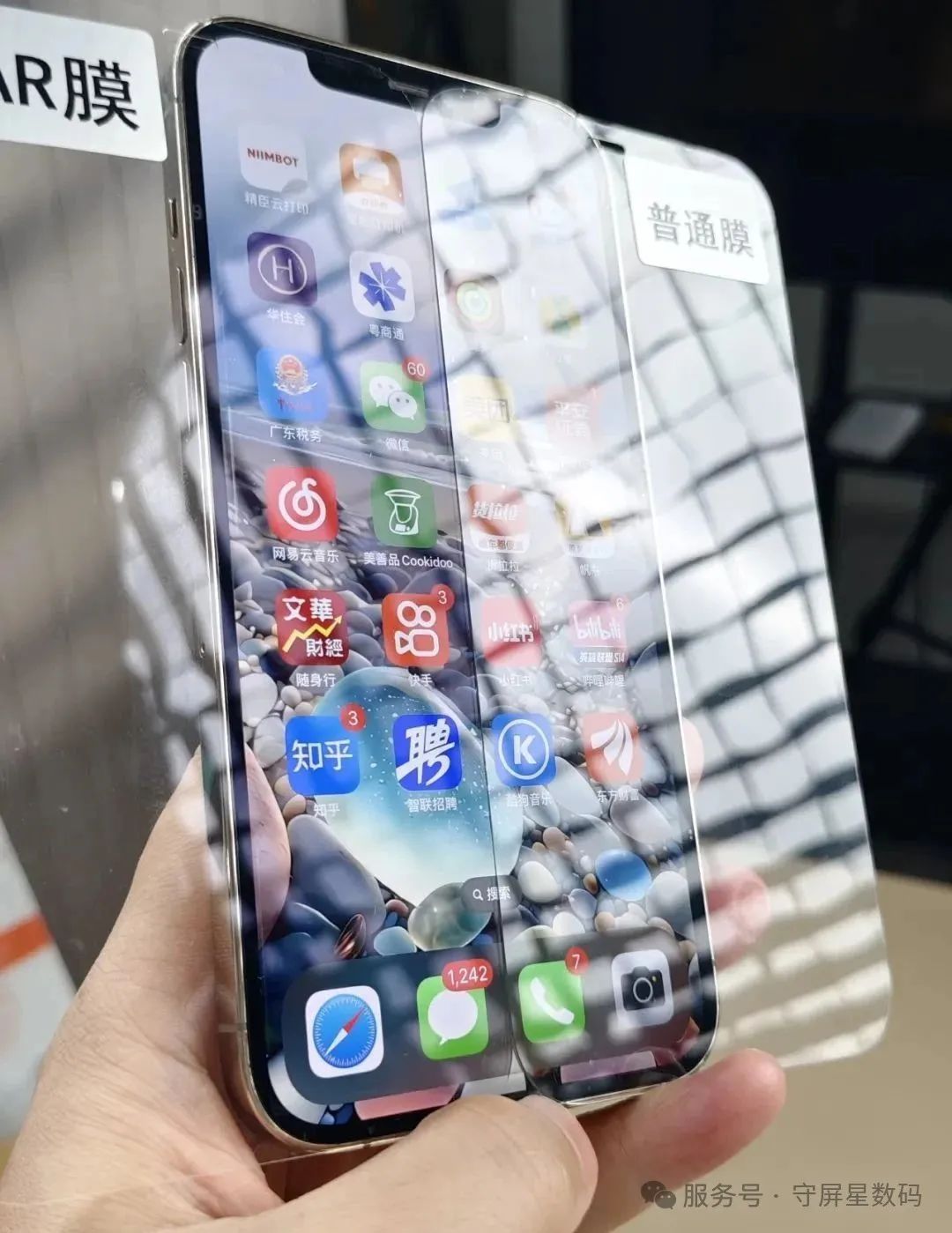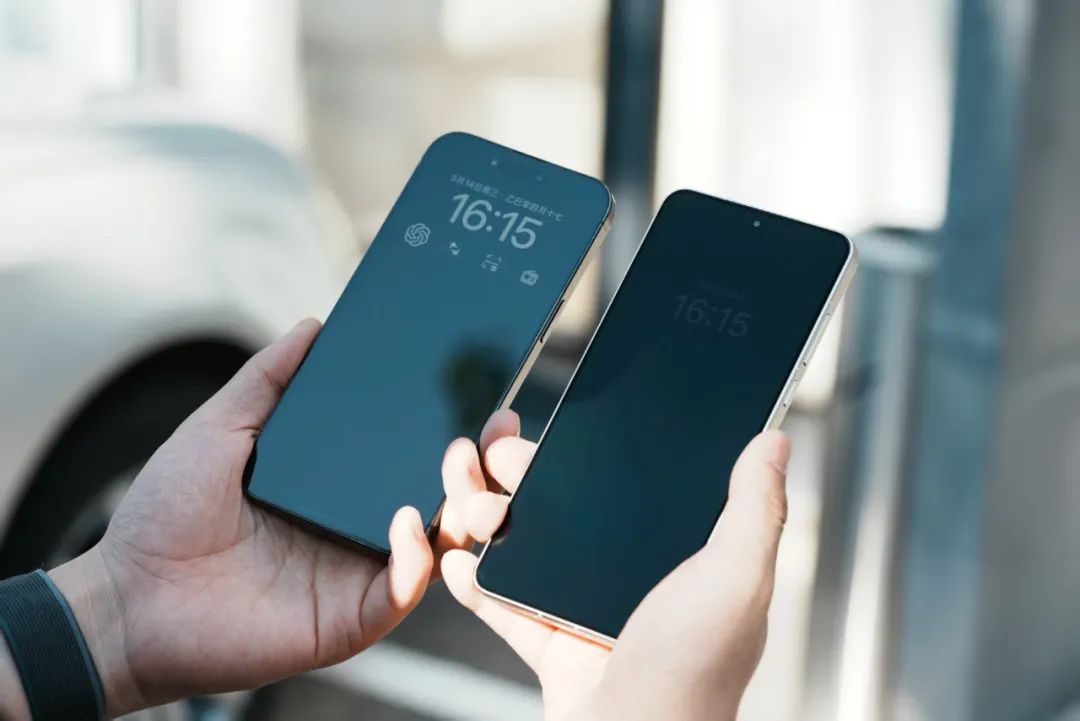Agricultural plastic film | Environmentally friendly degradable film | Self adhesive protective film
Conductive film | High barrier cling film | Heat shrink film
Welcome to Changzhou Hefeng Packaging Materials Co., Ltd!
Agricultural plastic film | Environmentally friendly degradable film | Self adhesive protective film
Conductive film | High barrier cling film | Heat shrink film
The final upgrade for mobile phone screens is on this thin glass
As mobile phone screens evolve from 720P to 2K/4K resolution, breaking through from 60Hz refresh rate to 144Hz high refresh rate, iterating from straight face screens to foldable and surround screens, consumers seem to have become accustomed to the "arms race" of manufacturers in screen parameters. But few people have noticed that this "window" that carries visual experience has a key upgrade hidden in the nanoscale transformation of the glass substrate - anti reflective AR glass, which is becoming the last piece of the puzzle for mobile phone screens to break through the experience ceiling.
1、 Reflection: The 'invisible killer' that troubles mobile phone screens
The common pain point for almost all users is the scene where the screen reflection causes blurry content and cannot be seen clearly even when the brightness is increased while looking at their phone under strong outdoor light. The reflectivity of a regular mobile phone glass cover is about 8%, which means that when ambient light shines on the screen, nearly 10% of the light will be directly reflected back to the human eye, forming an "interference overlay" with the display light of the screen itself. Especially in sunlight, this reflection can cause a sharp drop in contrast, blurry text edges, decreased color saturation, and even lead to visual fatigue and glare damage.
The core value of AR glass (anti reflective and anti reflective glass) is to reduce the reflectivity of the glass from 8% to below 1% through nanoscale optical coating technology. Taking the latest breakthrough technology of Apple suppliers as an example, they use magnetron sputtering technology to deposit 10-20 layers of nano films (each layer is only tens of nanometers thick) on the surface of glass, using the principle of light interference to cancel out the reflected light, ultimately achieving ultra-low reflectivity below 0.5%. This is equivalent to making the glass "invisible", allowing the displayed content on the screen to directly "penetrate" the glass and reach the human eye, completely solving the problem of reflective interference.

2、 From 'Clear Seeing' to 'True Seeing': The Experience Transition of AR Glass
For mobile phone screens, the upgrade brought by AR glass is not only about "anti reflection", but also involves a comprehensive improvement of display effects:
• Light transmittance leap: Ordinary glass has a light transmittance of about 89%, while AR glass can increase it to over 98%. This means that while the screen brightness remains unchanged, the perceived brightness of the screen increases by nearly 10%, allowing for clear viewing outdoors without the need for excessive brightness adjustment, indirectly reducing power consumption.
Accurate color reproduction: The reflected light of traditional glass will carry environmental colors (such as blue sky and vegetation reflection), resulting in screen color cast. AR glass can accurately control the reflection/transmittance of different wavelengths of light by the film layer, reducing the color deviation value (Δ E) from 3.0 of ordinary glass to below 1.5, approaching the color accuracy of professional displays.
• Ultra thin and durable balance: Modern AR glass can control the coating thickness at the micrometer level through processes such as atomic layer deposition (ALD), and through surface hardening treatment, the Mohs hardness of the glass can reach level 6 or above, with scratch resistance comparable to ordinary cover glass.

3、 The 'Ultimate Form' of Mobile Screen: The Future Scene of AR Glass
With the increasing penetration rate of foldable screen smartphones, the value of AR glass is becoming more prominent. For example, when the folding screen is in the unfolded state, the reflection problem of large areas of glass will be magnified, while AR glass can ensure the clarity of the image when displaying multitasking split screens; In the folded state, the secondary screen serves as a "preview window", and the AR glass allows users to quickly view notifications, take photos, and preview outdoors without frequently lighting up the main screen.
In fact, top manufacturers such as Apple and Huawei have already piloted AR glass technology in high-end models. Taking the Apple iPhone 15 Pro series as an example, its ultra ceramic crystal glass cover has achieved a 30% reduction in reflectivity through nano coating, and the next generation of models is expected to introduce fully bonded AR glass with reflectivity below 1%. Industry predictions suggest that by 2025, the global penetration rate of AR glass in the smartphone industry will exceed 25%, becoming a standard feature for high-end models.
This' invisible glass' is redefining the boundary of interaction between humans and screens. As parameters such as resolution, refresh rate, and dimming frequency reach their limits, AR glass has opened up the last "no man's land" for mobile screen experience with a nanoscale optical revolution - perhaps in the near future, we will truly forget the existence of glass and directly touch the essence of the digital world.
Welcome to Changzhou Hefeng Packaging Materials Co., Ltd!
Mobile phone: 15895061333
Email: 115555372@qq.com
Address: Moujia Village, Zhenglu Town, Tianning District, Changzhou City
Copyright © 2025 Changzhou Hefeng Packaging Materials Co., Ltd